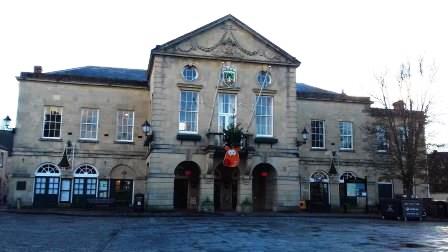Louisa and her husband Alan, visiting from the UK, had lunch with a few members of the society in November. Louisa joined the society a few years ago and regularly attends their meetings and outings. Their meetings are held in Wells Town Hall – we would know it as the exterior of the Warleggan Bank from the current series of Poldark.
Louisa is also part of the Richard III Society’s Somerset Branch research team working with Philippa Langley and the Missing Princes Project. This involves sourcing original documents from the period at Wells City archives, Wells Cathedral archives, the Somerset archives in Taunton as well as at Glastonbury Abbey, Longleat House and at The National Archives at Kew. The team is trying to find any information about the sons of Edward IV, particularly during the reign of Richard III. They are hoping to find new information in local records that have not been accessed before.
Philippa Langley highlighted a few lines of enquiry to be followed up, including researching Dr John Clement who married Sir Thomas More’s adopted daughter Margaret Giggs. This line of research relates to a theory that messages may have been hidden in a portrait of Sir Thomas More’s family by Hans Holbein, linking John Clement to Richard of Shrewsbury, the younger son of Edward IV. Two men called John Clement were located in the city of Bath (Somerset) in the first half of the sixteenth century, and the research group was tasked to see if there was a link to John Clement in London.
The team is also researching John Gunthorpe (d. 1498), who was the Dean of Wells, Keeper of the Privy Seal, and Dean of the Chapel Royal during Richard’s reign, and may have been in London during the suspected time of the princes’ disappearance. He certainly seemed to spend more time in London than in Wells.
Louisa is also involved in the Milles Register of PCC Wills (Prerogative Court of Canterbury) project, where researchers work in pairs to decipher, transcribe and where applicable translate wills from the period 1487 – 1491. Some wills are in English, some in Latin and some in both. The society had previously looked at York Wills and the Logge Register of PCC wills.
She mentioned a palaeography web tutorial as useful to learn how to read the old handwriting found in documents written in English between 1500 and 1800.
Louisa was so interesting to talk to and it was great to catch up with a fellow Ricardian. We are lucky that volunteers like Louisa are able to be involved in so many research projects.



Leave a reply